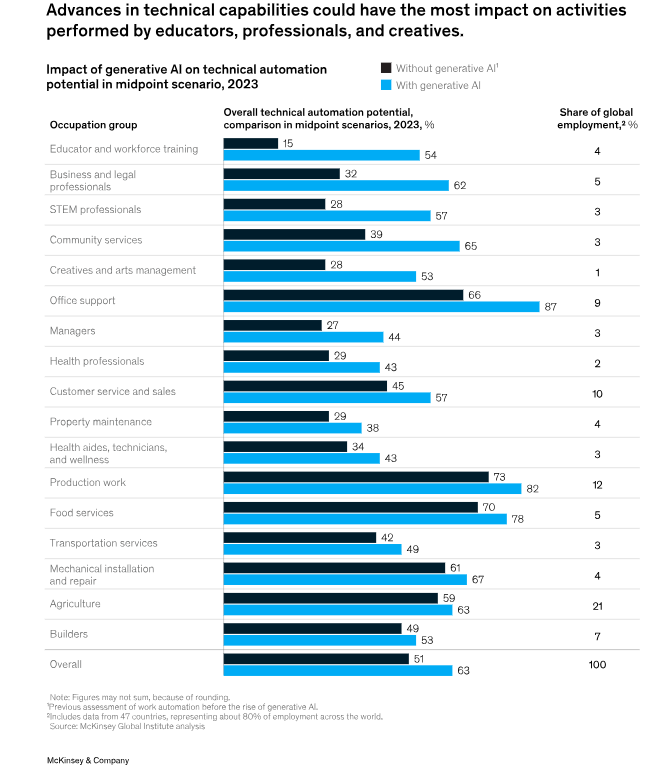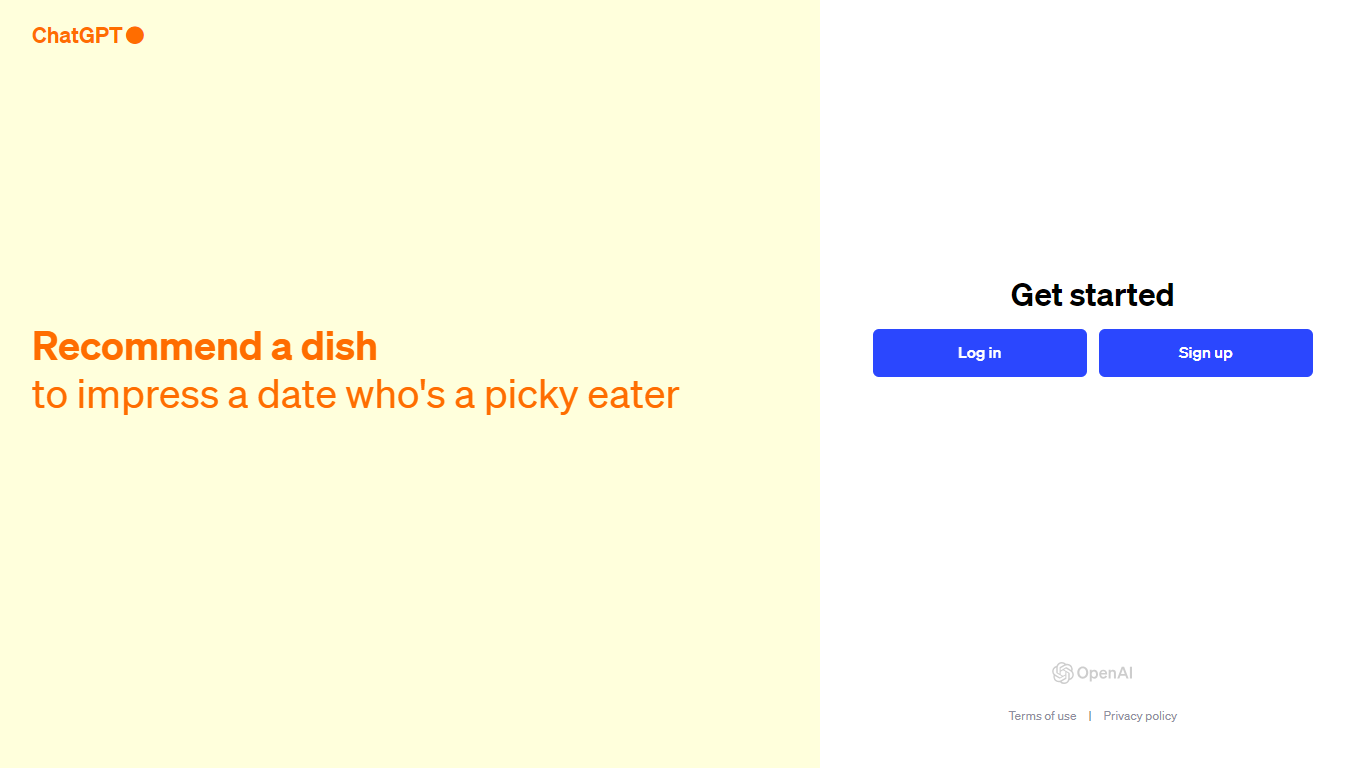
In today’s rapidly evolving technological landscape, there’s a pervasive curiosity about the future of generative AI.
Where is it headed?

That’s the big question on the minds of tech enthusiasts and industry insiders alike. From its innovative applications in creative content generation to its potential to revolutionize various sectors, the future of generative AI is a subject of intense speculation and excitement.
Join us as we embark on a journey to explore the possibilities, challenges, and transformative impact that lie ahead in the future of generative AI.
What Is Generative AI?
Generative AI functions akin to having a virtual artist within your computer.
This form of artificial intelligence is engineered to produce fresh content, spanning images, music, or text, drawing insights from patterns it discerns within available data.

To illustrate, envision having a talented artist friend. You present them with numerous flower paintings, and after studying them, they craft their distinct flower artworks that rival professional standards. Generative AI operates in a similar vein, albeit as a computerized program.
A prime instance of generative AI in action is found in Adobe Photoshop, notably through its Content-Aware Fill tool. Utilizing this feature allows users to erase objects from an image, with Photoshop seamlessly filling the void based on surrounding pixels.
This almost magical process relies on sophisticated algorithms that analyze image content, generating new pixels to blend with the existing composition seamlessly.
Hence, it creates novel content by extrapolating from the original image data.
What Generative AI Can Do:
Even in companies without extensive AI or data-science knowledge, generative AI can greatly accelerate AI deployment. By using generative models, even with just a little data or examples, activities can be adopted quickly using APIs or simple prompts.
However, significant customization still requires expertise.
Generative AI supports three main skill categories:
- Content & Idea Generation: Creating fresh and original content across various media types, like making a video ad or designing a new protein with antibacterial properties.
- Boosting Productivity: Speeding up manual or repetitive tasks such as writing emails, coding, or summarizing documents.
- Personalizing Experiences: Crafting content and information tailored to specific audiences, such as using chatbots for personalized user interactions or targeted marketing based on individual customer behavior trends.
The Economic Potential In The Future of Generative AI?
Do you know that super-smart tech behind gen AI products? Well, it’s been in the works for decades!
But ever since ChatGPT launched in late 2022, there have been tons of updates to gen AI. Just in March 2023, there were six big advancements, like better customer service tools and new features for finance stuff. It’s like this tech is evolving super fast, making our lives easier and better all the time.
The automation of knowledge work is becoming more tangible. While past waves of automation primarily targeted physical tasks, generative AI is set to revolutionize knowledge-based work, particularly tasks involving decision-making and teamwork.

Impact of generative AI in technical automation
(source: McKinsey & Company)
Professionals across various fields like education, law, technology, and the arts may witness parts of their jobs being automated sooner than anticipated. This is due to generative AI’s capability to analyze natural language patterns and apply them dynamically.
How Big Is Its Economy?
Generative AI has the potential to significantly boost productivity, offering a substantial economic value worldwide. According to a recent research by McKinsey, the integration of generative AI across various applications could contribute between $2.6 trillion to $4.4 trillion annually.
To put this into perspective, this figure surpasses the entire GDP of the United Kingdom in 2021, which stood at $3.1 trillion.
Such integration could also enhance the overall impact of artificial intelligence by 15 to 40 percent. Moreover, if we consider embedding generative AI into existing software for broader tasks, this estimate could double. This underscores the immense potential for generative AI to drive economic growth and innovation across industries.
The Three Critical Questions To Ask
Technology Review, a renowned resource for business blogs, mentioned through a very infographic about the future of Generative AI.
The infographic suggests that generative AI is hope, hype, and nope! As it brings hope for a much more efficient technological future and is definitely hyped. However, it all may lead to unexpected problems. Check out the creative below:

(source: Technology Review)
On that note, and with the three creative adjectives on gen AI, let’s get the answers for the three critical questions we have to ask ourselves about the future of generative AI.
Q1. How do we tackle the misinformation problem?
A1. In 2023, three pictures became super popular online. One showed the pope wearing a fancy Balenciaga coat, another had Donald Trump getting tackled by police, and the third showed an explosion at the Pentagon. But here’s the catch: they were all fake! Even though they weren’t real, millions of people still saw and shared them.



(source: MIT Technology Review)
Making fake text or pictures using special computer programs is easier now. Many people are worried because there’s so much fake news out there. OpenAI, a big tech company, worked on a study showing how its technology could be used to make fake news.
Q2. Isn’t AI bound to get biased towards certain misinformation or opinions?
A2. Let’s consider an AI-powered news recommendation system used by a social media platform. If this system is trained on a dataset that predominantly features content from a specific political ideology, such as left-leaning or right-leaning sources, it might unintentionally promote biased or one-sided viewpoints to users.
Take ChatGPT for instance.

ChatGPT by OpenAI
If the software primarily recommends content from left-leaning news outlets, it could reinforce left-leaning perspectives among users while neglecting alternative viewpoints. This can contribute to the spread of misinformation or the amplification of certain opinions.
Therefore, it’s crucial to ensure that AI systems are trained on diverse and balanced datasets to mitigate the risk of bias and promote fairness in content recommendation.
Q3. Will generative AI cause copyright issues with its produced work?
Generative AI could indeed raise copyright concerns with its output. Since it creates new content based on patterns learned from existing data, there’s a risk of inadvertently reproducing copyrighted material.
For example, a generative AI model trained on a dataset of copyrighted images might generate new images that closely resemble those originals, potentially infringing on copyright.
Additionally, distinguishing between original and AI-generated content could pose challenges for copyright enforcement. To address these issues, policymakers, content creators, and AI developers must collaborate to establish clear guidelines and legal frameworks.
Implementing measures like watermarking AI-generated content and ensuring proper attribution can help mitigate copyright issues and foster responsible use of generative AI technology.
Summing Up: The Future of Generative AI
Generative AI is set to shake up society and technology in the future. Expect more exciting and innovative uses as researchers and developers dive deeper into this field.
Generative AI is a fascinating branch of artificial intelligence. It uses machine learning to create entirely new and groundbreaking data across various areas. It can speed up AI adoption, boost productivity, and tailor user experiences.
Looking forward, generative AI could bring about more sophisticated algorithms, reshaping our tech interactions. But, it’s vital to prioritize ethical and responsible AI development. This ensures we harness its benefits for the greater good.
People Also Read:
Generative AI vs Traditional AI: A 2024 Analysis
How ethical is AI and things you need to know.
Can AI Replace Marketing Jobs Soon?




